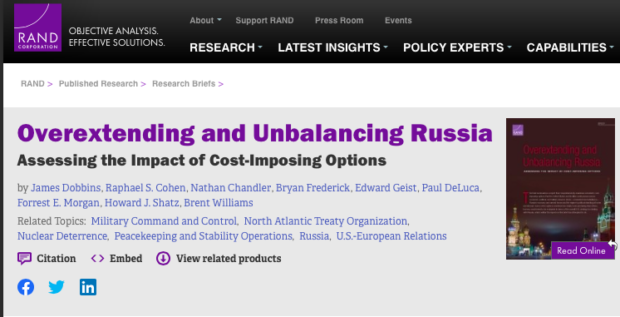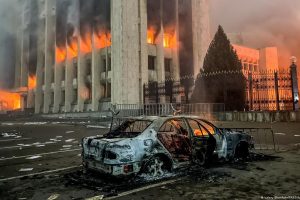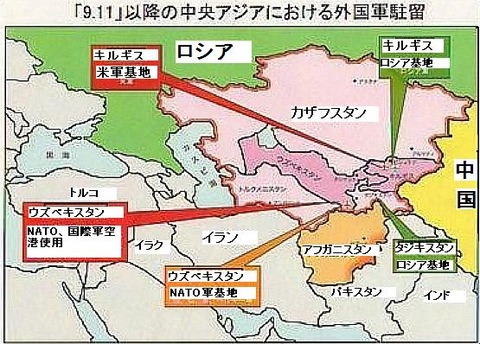What is the true aim of the neoconservative-led war against Russia that is being waged by the United States and Britain on behalf of Ukraine ? Needless to say, it is the dismantling of the current Russian regime. They are trying to bring down the Putin regime and once again establish a pro-US government in Russia. If that is the case, the war in Ukraine should be prolonged as long as possible, and the front should be expanded to include the five Central Asian countries that formed the former Soviet Union sandwiched between Russia and China. After the dissolution of Russia, they will focuse on attacking China . Such a scenario would undermine the formation of an new world order. The historic rapprochement between Saudi Arabia and Iran, mediated by China, and the subsequent restoration of Saudi-Syrian ties is fueling the end of the civil war in Syria, which was backed by Russia, China and Iran, and is driving the United States out of the Middle East. Asia, Central and South America, Africa so called Global South are generally seeking a new order to replace the dominance of the United States and Europe. For this reason, the United States and Great Britain seem to have had no choice but to plant “ammunition” in the core of Eurasia, the backyard of China and Russia, and move toward preventing the formation of a new order. Will the neoconservatives bet on high odds after being cornered?
■ “Let Russia spread its hand”
The war in Ukraine stems from the fact that the wave of NATO's eastern expansion surged toward Ukraine, which Russia considered to be a neighboring country and a brother country . Although it is generally perceived as such, the Ukraine War is part of the US-NATO effort to dismantle the current Russian regime, and the frontline stretches from the Southern Caucasus of Georgia, Armenia, and Azerbaijan, which surrounds southern Russia, to Kazakhstan and Kyrgyzstan, Tajikistan , Turkmenistan , and Uzbekistan ,the former Soviet states , the so-called five Central Asian countries.
 In 2019, the US think tank Rand Corporation published a report titled “Let Russia Overextend: Competing from the Edge.” The Institute ( RAND Corporation) was founded in 1948 and he is one of the oldest think tanks in the United States. More than half of that funding comes directly from government agencies such as the Pentagon and the National Security Agency. It is also funded by the US military industry, and its recommendations are those of the US military-industrial complex.
In 2019, the US think tank Rand Corporation published a report titled “Let Russia Overextend: Competing from the Edge.” The Institute ( RAND Corporation) was founded in 1948 and he is one of the oldest think tanks in the United States. More than half of that funding comes directly from government agencies such as the Pentagon and the National Security Agency. It is also funded by the US military industry, and its recommendations are those of the US military-industrial complex.
The report argues that the United States has propelled Russia into competition in territories and regions where it has a competitive advantage, and has overreached Russia militarily and economically, eroding its influence at home and abroad, and undermining the current regime. It is proposed to Chapter 4 lists her six "geopolitical steps" for the United States to take. Namely, 1. Provide strong military aid to Ukraine 2. Increase support for Syrian rebels 3. Facilitate regime change in Belarus 4. Capitalize on tensions in the South Caucasus, especially with Armenia and Azerbaijan 5. Central Asia 6. Challenge Russia's presence in Moldova.
Needless to say 1 and 2, the United States has already tried to change the regime in Belarus, instigated a war between Azerbaijan and Armenia ( the Nagorno-Karabakh conflict) , and took the opportunity of the Ukraine war to join NATO and the European Union (EU) again. It is plotting to revive the war between Georgia and Russia , which is rapidly approaching . Washington is seeking to open a second front against Russia to improve the situation in the proxy war it is promoting in Ukraine.
■ Kazakh riots just before the outbreak of war
Turmoil in Kazakhstan in early January 2022, a month and a half before Russia's invasion of Ukraine. It looked as if it was a rehearsal for a riot that mimicked the 2014 Maidan coup in Ukraine.
Liquefied petroleum gas (LPG) prices nearly doubled overnight after the government of Kazakhstan lifted its price cap on January 1 . As if waiting for it, the next day, on the 2nd, a protest demonstration broke out in Zhanaozen , a city in western Kazakhstan.The demonstrations, which were moderate at first, spread from western towns such as Aktau , Aktobe , and Atyrau to major cities such as the capital Astana and the economic center of Almaty , and gradually became violent, and began to clash with the police. Demonstrations by tens of thousands in Astana and Almaty erupted into violent riots.
Voices of protest soon turned into calls for major political change. Condemnation of fraudulent elections and political corruption, resignation of government leaders, election of local government leaders by direct election, wealth oligopoly, correction of economic disparities , revision of the constitution, etc., and the protests could not be dealt with by the police alone. The government declared a state of emergency, and the Kazakhstan army and other six former Soviet Union member countries, the Collective Security Treaty Organization (CSTO), dispatched troops including the Russian army .
 January 5 was the peak of the riots. Demonstrators raided the public prosecutor's office and obtained firearms. The attacked city hall is in flames = photo =, the residence of President TokayevThe secretariat of the ruling party Nur Otan was also attacked . The building of the state media agency in the capital Astana was burned down, and general stores, banks, ATMs and shopping centers were looted.
January 5 was the peak of the riots. Demonstrators raided the public prosecutor's office and obtained firearms. The attacked city hall is in flames = photo =, the residence of President TokayevThe secretariat of the ruling party Nur Otan was also attacked . The building of the state media agency in the capital Astana was burned down, and general stores, banks, ATMs and shopping centers were looted.
The civil unrest was declared over on January 11 , and the total number of deaths was put at 225 by the government. The peacekeepers of each CSTO member country had withdrawn by the 19th. When withdrawing Russian troops, Putin denounced the uprising as a "foreign-backed terrorist uprising" and Tokayev called it a "terrorist attack aimed at a coup d'état and thoroughly trained in a foreign country". Russian media pointed out that "the United States is behind it." Both remarks frame the turmoil with the political upheaval in Ukraine in February 2014 in mind .
■Infiltration of Ukrainian secret forces
The Kazakhstan government extended the state of emergency to the whole of Kazakhstan and deployed the military to try to suppress the protests. In particular, in Almaty, Kazakhstan's largest city and economic center, mob demonstrators occupied government facilities and Almaty International Airport, and some forces took the weapons of the military and security forces and began resistance, and gunfights broke out everywhere. bottom. Kazakh paratroopers attempted to recapture the occupied facility, but the mob continued organized resistance and failed to recapture it. The Kazakh government claims that "the unrest is clearly a resistance by forces trained in combat and that foreign rebels are intervening in this unrest."
"The protest movement in Kazakhstan is led by Ukraine." Russian media concludes: The prevailing view is that highly trained forces secretly intervened in this riot with the support of Ukraine.
The Right Sector, the parent body of the Ukrainian neo-Nazi Azov Battalion, was founded by Andriy Biletsky and Dmitry Yarosh . Biletsky, leader of the far-right neo-Nazi party National Corps , led the Azov Battalion and has been slaughtering and ill-treating Russians (Russian-speaking residents) in eastern and southern Ukraine as part of ethnic cleansing.
Following the collapse of the Soviet Union in 1991 and the independence of Ukraine in 1991, Yarosh became devoted to Ukrainian nationalism, joining Trizb, a nationalist and paramilitary organization descended from Stepan Bandera in 1994, and has been its leader since 2005. rice field. During the 2014 Ukrainian coup, he led the formation of the Right Sector, a coalition of far-right organizations centered on Trizb . On November 2, 2021, President Zelensky appointed Yarosh as an advisor to the Supreme Commander of the Ukrainian Armed Forces.
It can be said that the Ukrainian military came under the command of Yarosh, not only because he is a neo-Nazi, but also because Yarosh, who belongs to the NATO secret forces network , became an advisor to the Supreme Commander of the Armed Forces . In other words, US and British intelligence are effectively running the Ukrainian military .
The above-mentioned foreign powers, which demonstrated advanced combat capabilities that overwhelmed the Kazakh army during the Kazakhstan turmoil, can only be seen as infiltrated Ukrainian secret forces under the umbrella of NATO . Putin, Tokayev and the Russian media quickly saw what was behind the Kazakh unrest.
■Activation of Islamic terrorists
Kazakhstan, with a population of approximately 19 million, is overwhelmingly Muslim. Islam was secularized during the time it was part of the Soviet Union. However, after independence, the movement to revitalize Islam progressed, and the activities of extremists became conspicuous along with the rise of Islamic terrorism.
Al-Qaeda and other Islamic extremists, enemies of the US-UK “war on terrorism,” can be said to be products of US-British intelligence agencies. In Central Asia, the activities of al-Qaeda, the Taliban, the East Turkistan Islamic Movement ( ETIM), and the Uzbekistan Islamic Movement ( IMU), which are banned in Russia, are prominent. In June 2016, members of the Islamic State (IS), believed to have flown in from Syria, attacked military installations in Aktobe, western Kazakhstan, killing nearly 30 people.
For the United States and Great Britain, Central Asia is geopolitically positioned as a bridge between Europe and East Asia. It has been an extremely important strategic region since the 19th century . are doing. In addition, there are large oil fields such as the Kashagan oil field, where Exxon Mobil and Royal Dutch Shell have invested a large amount of money.
Since Richard Moore became head of the British Intelligence Service and Foreign Intelligence Service (MI6) in 2021 , there has been notable anti-Russian activity by US and British intelligence in Kazakhstan, Kyrgyzstan, Tajikistan and Uzbekistan to keep Russia out . Pan-Turkic organizations and Islamist stooges are carrying out subversive operations. The United States and Great Britain intend to expand such moves and keep Russia and China glued to Central Asia .
On the other hand, Turkey is trying to increase its presence in the former Soviet Union and Central Asia region. At the end of 2021, a summit meeting will be held with Turkmenistan and other countries with similar ethnicities, cultures, and histories, and the Turkic Nations Organization will be launched. It seems that the United States and Britain wanted to use Turkey as a battering ram against China and Russia by pitting Turkey against major powers such as Russia and China for influence in operations in the region. However, NATO member Turkey is approaching the China-Russia-led Shanghai Cooperation Organization (SCO), and the United States and Britain are out of line.
In any case, the Central Asian countries around Kazakhstan are more or less like Kazakhstan in that they have long-term regimes that monopolize power. I am concerned that the same kind of unrest as in Kazakhstan will spread as a domino toppling. Although the Collective Security Treaty Organization (CSTO) , which consists of six former Soviet states led by Russia, had loosened its ties, the Kazakh riots are forcing the military alliance to stabilize. If the activities of the Russian military in this region intensify, it will give Islamist extremists a pretense of blasphemy against the Islamic world, and there is a high risk of riots and increased terrorism .
Repeat Kazakh-type large-scale disturbances, intervene with the Russian military, and activate Islamic terrorist groups. And it will destabilize the entire Central Asian region to the extreme and exhaust Putin's Russia. This would be the strategy of the US neoconservatives.
■ 9/11, rethinking the invasion of Afghanistan
The withdrawal of U.S. troops from Afghanistan in 2021 and the Taliban 's seizure of the capital Kabul are believed to have sparked Islamic extremists in the Central Asian region. It is true that the governments of Kazakhstan and other Central Asian countries are nervous about this.
" The US , which has invested trillions of dollars in the 20-year war effort, has turned Afghanistan into a boiling cauldron of destabilization for China, Russia, Iran and the Central Asian region. " It has been said that defeat has been licked, but some U.S. strategists see "the silver lining":
The motive of the Bush-U.S. neoconservatives' invasion of Afghanistan 20 years ago was not to take revenge on the 9/11 terrorist attacks in the United States or to eradicate terrorists, but rather to assert geopolitical control over the backyards of China and Russia. was. Even if only temporarily, Russia and China relaxed their vigilance and made them cooperate in the “war on terrorism,” and established US military bases in Kyrgyzstan and Uzbekistan in the backyard of Central Asia. The seeds of terrorism are sufficiently sown there.
Analysis by Finian Cunningham in the Strategic Culture Foundation dated September 10, 2021, "US Plan B for Afghanistan ? Screw Up China — Strategic Culture (strategic-culture.org) " Posted an article.
According to it, when asked about the future relationship between China and the Taliban regime in Afghanistan, President Joe Biden replied to reporters with a genuinely pleasant expression : " China has a big problem with the Taliban. Not just China, but Russia, Iran, Pakistan... They are trying to understand what is happening. So it will be interesting to see what happens next. ”.
China and Russia are aware of the intentions of the United States and Britain. The US military is now moving to build military bases in Uzbekistan and Tajikistan again. I don't think things will go according to plan, but I'm keeping an eye on it as it predicts a significant escalation of the war in Ukraine.

Reference 1: Posted on August 26, 2021 in Japan Blog, "The U.S. will attack China from the east and west, exploring the backside of the withdrawal of U.S. troops from Afghanistan."
See
Reference 2: U.S. Secretary of State Brinken visited Astana , the capital of Kazakhstan, in February and met with the foreign ministers of five Central Asian countries. In December last year, the Japanese government invited the foreign ministers of five countries to Japan to serve as the scapegoat for Prinken. This issue will be discussed in another article.
